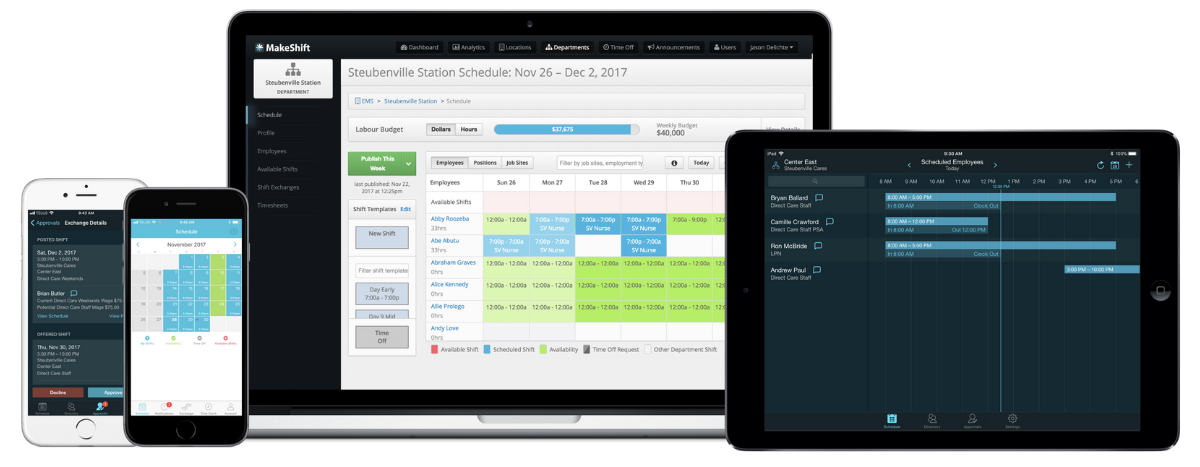If you're reading this, you either fall into 1 of 2 categories... you're new to home health care scheduling and looking for all the info you can get your hands on.
We’ve got your deep dive here.
Or you've got some experience and just need a little guidance to create your schedule right... if that’s the case, you can jump to:
3 Steps to Create a Home Health Care Schedule
Home healthcare scheduling today has evolved into a dynamic and intricate process driven by technology, patient-centered care, and the need for efficient resource allocation.
With the advancements in scheduling software, telehealth solutions, and real-time communication platforms, you can now optimize your schedule, ensure timely visits, and adapt to the ever-changing needs of patients while maintaining a personalized touch.
The emphasis is on balancing flexibility, responsiveness, and coordination to deliver high-quality care in the comfort of patients' homes.
Today, we’ll cover:
- What Is a Home Health Care Schedule?
- 3 Disruptors of Home Health Care Scheduling
- 3 Steps to Create a Home Health Care Schedule
- MakeShift Supports Home Healthcare Scheduling
What Is a Home Health Care Schedule?
This section is for you newbies — are you trying to consume all the info you can on home health care? We’ve got you covered…
A home health care schedule outlines when and how care will be provided to patients in their own homes.
It includes details like these:
- Type of care needed
- Frequency and duration of visits
- Specific tasks to be performed on each visit
According to a National Council on Aging report, "Home-based care and support services can delay or even eliminate the need for institutional care, reduce the likelihood of hospitalization, and improve the overall quality of life for older adults."
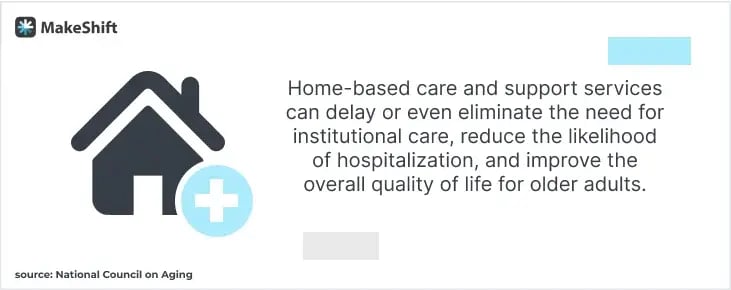
Effective scheduling of home health care services can help ensure your patients receive the care they need to stay healthy and independent in their own homes.
Why it’s important
Creating a plan or a schedule in any area of your life cuts down on chaos, keeps important stuff from falling through the cracks, and leaves more space to enjoy life.
A home health care schedule is no exception. If you meet resistance from a patient or family member when working to create a schedule, run down these reasons with them.
A good schedule:
- Ensures patients consistently receive the care they need.
- Helps coordinate care between different providers and ensures everyone is on the same page.
- Allows patients and their families to plan their days around scheduled visits, reducing stress and uncertainty.
- Helps prevent missed visits which keeps patients progressing or monitored.
- Provides a framework for evaluating the effectiveness of care and making needed adjustments.
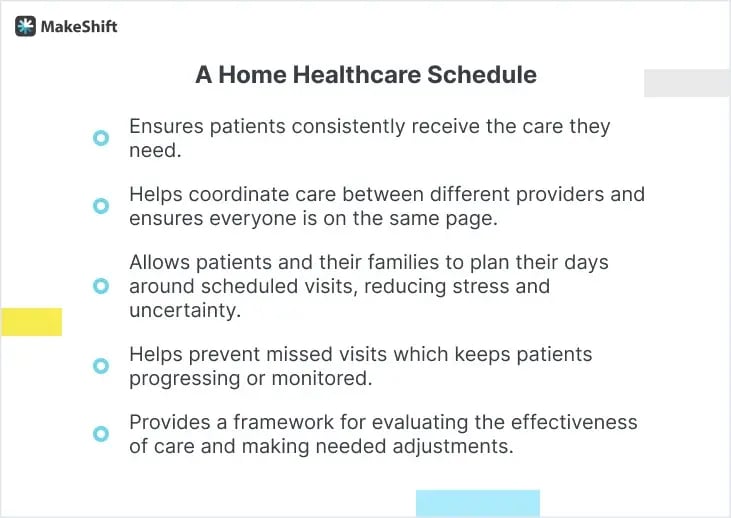
3 Disruptors of Home Health Care Scheduling
Traveling from home to home to provide care for homebound patients comes with its fair share of unique disruptions.
However, with adaptability, resilience, and a dash of humor, you can come up with creative solutions to the disruptions below. A provider pro like you can ensure your patients receive the care they need, even in the face of scheduling hurdles.
3 common scheduling disruptors:
1. The “Chatty Cathys”
Dealing with talkative patients, or "Chatty Cathys" — these folks have a knack for turning a simple appointment into a full-blown chat-a-thon.
While you love building rapport and hearing their life stories, it can wreak havoc on your carefully planned schedules.
Finding the perfect balance between lending an ear and keeping things on track can become 1 of your superpowers.
Strategies such as active listening, redirecting the conversation when necessary, and setting boundaries on conversation time can be helpful in managing the chattiness of patients without compromising their emotional well-being.
A home health care provider’s job is part therapist and timekeeper as well as a care provider. When done right, you can validate your patients’ need to be heard and stay on schedule.
2. Murphy’s Law
Murphy's Law is the nemesis of home healthcare scheduling. Good ole Murphy seems to have an uncanny ability to sense moments of smooth sailing and seize the opportunity to throw us unexpected curveballs.
Just when you think your day is under control, Murphy swoops in with a slew of scheduling disruptions, ready to wreak havoc on your carefully crafted plans.
- Inexplicable equipment malfunction — You arrive at a patient's home, and the blood pressure monitor refuses to cooperate, or the pulse oximeter glitches for a full 5 minutes.
- Transportation turmoil — When you must be in 2 places at once, a traffic jam materializes out of thin air. Or your GPS takes you on a wild goose chase while your schedule hangs precariously in the balance.
- Weather woes — Rainstorms appear out of nowhere, turning driveways into muddy obstacle courses. Heatwaves send temperatures soaring, testing your endurance and melting your well-laid plans. Snowstorms blanket the roads, transforming them into slippery challenges requiring careful navigation.
3. Mistrustful patient/provider relationship
Navigating the world of home health care can sometimes feel like tip-toeing through a field of banana peels, especially when your patient has a healthy dose of skepticism toward you.
A survey by the American Medical Association found that 40% of patients reported mistrusting their healthcare provider.
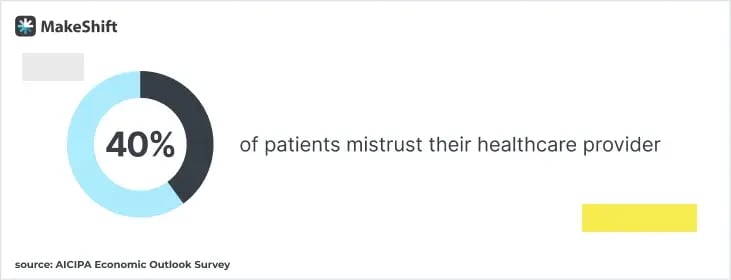
A mistrustful patient can disrupt your home healthcare schedule in several ways.
Mistrust often leads to heightened skepticism and resistance to receiving care.
1. This can result in delays or extended time spent trying to build rapport and establish trust with the patient.
These interactions require a hefty dose of patience and effort from you, which can cause your schedule to fall behind.
2. A mistrustful patient is more inclined to question and challenge your recommendations and instructions. This can lead to prolonged discussions and debates during appointments, consuming valuable time that could have been allocated for other patients.
You’ll need to invest extra energy in addressing your patient's concerns, clarifying information, and attempting to gain their cooperation. All of which may throw off your carefully planned schedule.
3. A mistrustful patient may request additional tests, consultations, or interventions out of skepticism or fear. This can result in unplanned changes in your schedule to try to accommodate these requests or coordinate with other healthcare professionals involved.
It may involve rescheduling appointments, rearranging logistics, and potentially disrupting the care flow for other patients who were originally scheduled for those time slots.
3 Steps to Create a Home Health Care Schedule
Scheduling home health care is a juggling act that requires regularly revisiting the process to improve, update, and implement new systems.
So, whether you’re an old hat at home care scheduling or you’re brand new to the game, these 3 steps can streamline your scheduling system.
1. Ditch the manual scheduling system
Gone are the days of juggling paper schedules and playing the guessing game of availability. Ditch the manual scheduling system and embrace intuitive scheduling software.
With the click of a button, you can revolutionize your scheduling process and bring harmony to your home healthcare team.
You’ll feel empowered to take control of their schedules. No more tedious back-and-forths or scribbled availability notes on pieces of paper. With an automated scheduling system, your staff can easily set their availability, swap shifts effortlessly, and access their schedules with just a few taps on their phones.
Scheduling software helps eliminate over or under-scheduling because you can see availability as you work on schedules.
Empower your staff, gain valuable insights, and create schedules that are finely tuned to the needs and availability of your team.
With this modern approach, you'll not only streamline your scheduling process but also enhance employee satisfaction and productivity in the world of home health care.
2. Focus on personalized patient care
It’s more than a matter of patient preference. As health organizations evaluate the health of communities, an awareness of differences is emerging.
The health needs of men, for example, differ significantly from the health needs of women.
Different populations have unique preferences and risk profiles that need to be accounted for.
- Build social & skill profiles — match the right healthcare worker with the right patient
- Work closely with family/support people — A higher comfort level between the patient’s support people, and you create trust. Your appointments will go more smoothly, allowing you to stay on schedule.
- Use technology to optimize travel routes — Minimize travel times (& costs) to provide timely patient care and stay on schedule. Patients feel important when you consistently show up on time.
3. Adopt point-of-care technology
The drive to reduce healthcare costs is a system-wide approach — aligning workers, patients, and administrative processes will set your home healthcare organization up for success.
When capacity is tight, knowing where workers are, when they’ll finish up, and how long it takes to reach the next site can help schedulers create a seamless, pain-free process for both caregivers and patients.
2 benefits of point-of-care tech:
- Documentation is done in real time, and workers, patients, and administrators stay connected.
- Point-of-care technology frees up time spent on documentation & keeps daily schedules on track.
MakeShift Supports Home Health Care Scheduling
MakeShift Scheduling cuts chaotic, clunky, error-prone scheduling and streamlines staff scheduling.
On-the-go schedule access and management make us the perfect partner for home health care staff scheduling.
We support home healthcare workers in a number of ways…
Improved scheduling flexibility
Boost flexibility by allowing your in-home healthcare workers to have more control over their schedules. They can set their availability, preferred shifts, and other scheduling preferences, which are taken into account when creating the schedule.
.jpg?width=1200&height=1200&name=schedule_pocket_(1).jpg)
Reduced scheduling errors
Reduce frustrating scheduling errors by automating the scheduling process and reducing the need for manual data entry.
MakeShift uses algorithms to automatically create schedules based on worker availability, preferences, and other factors. This reduces the need for manual data entry and eliminates errors that can occur when schedules are created manually.
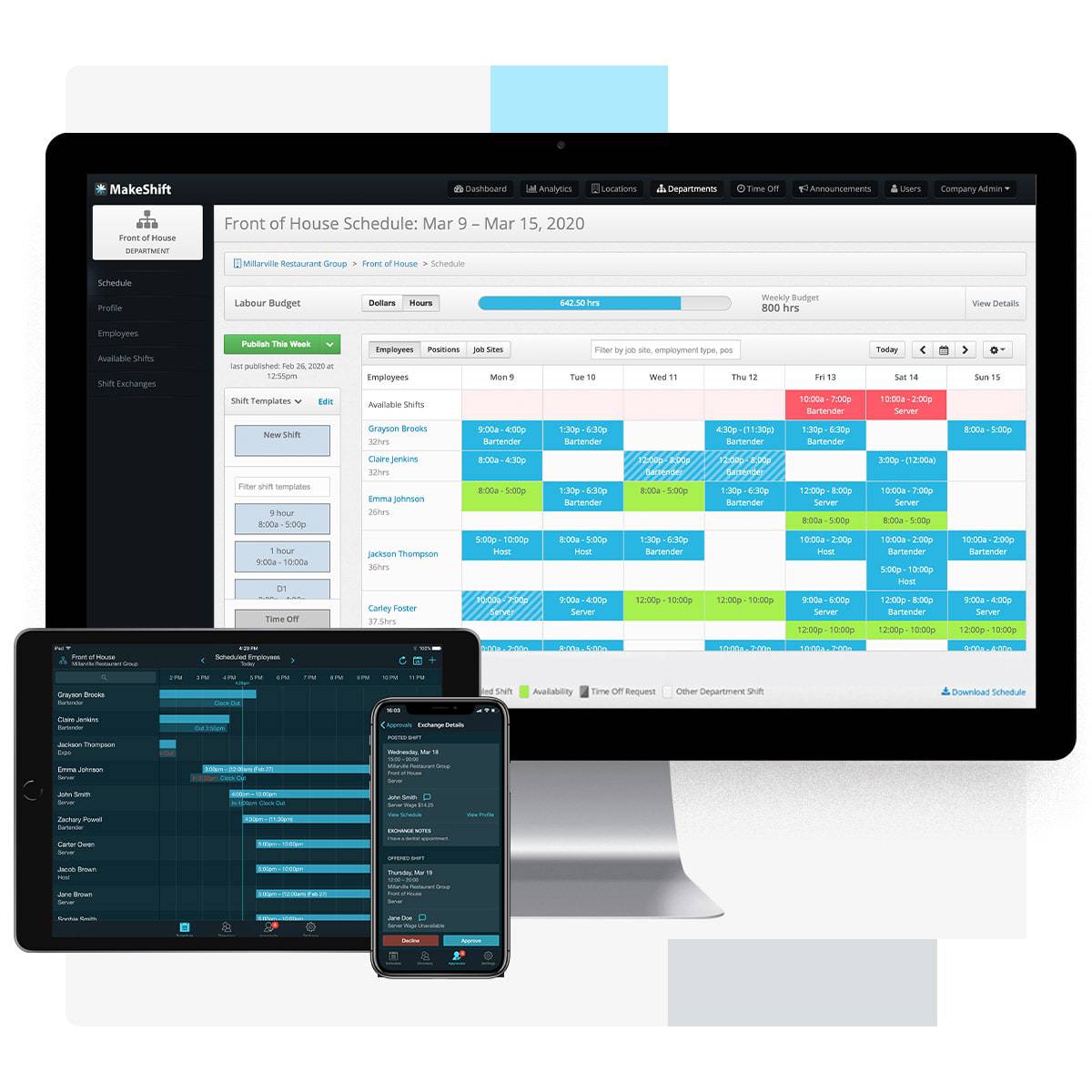
Enhanced communication & collaboration
MakeShift enhances the cohesiveness of your team by improving the channel of communication and making it easy to collaborate.
- Real-time updates — With MakeShift, updates to the schedule are made in real-time and visible to all team members, reducing the risk of miscommunication and ensuring that everyone is aware of any changes.
- Messaging feature — The messaging feature allows team members to communicate directly with each other, eliminating the need for separate communication channels and reducing the risk of miscommunication.
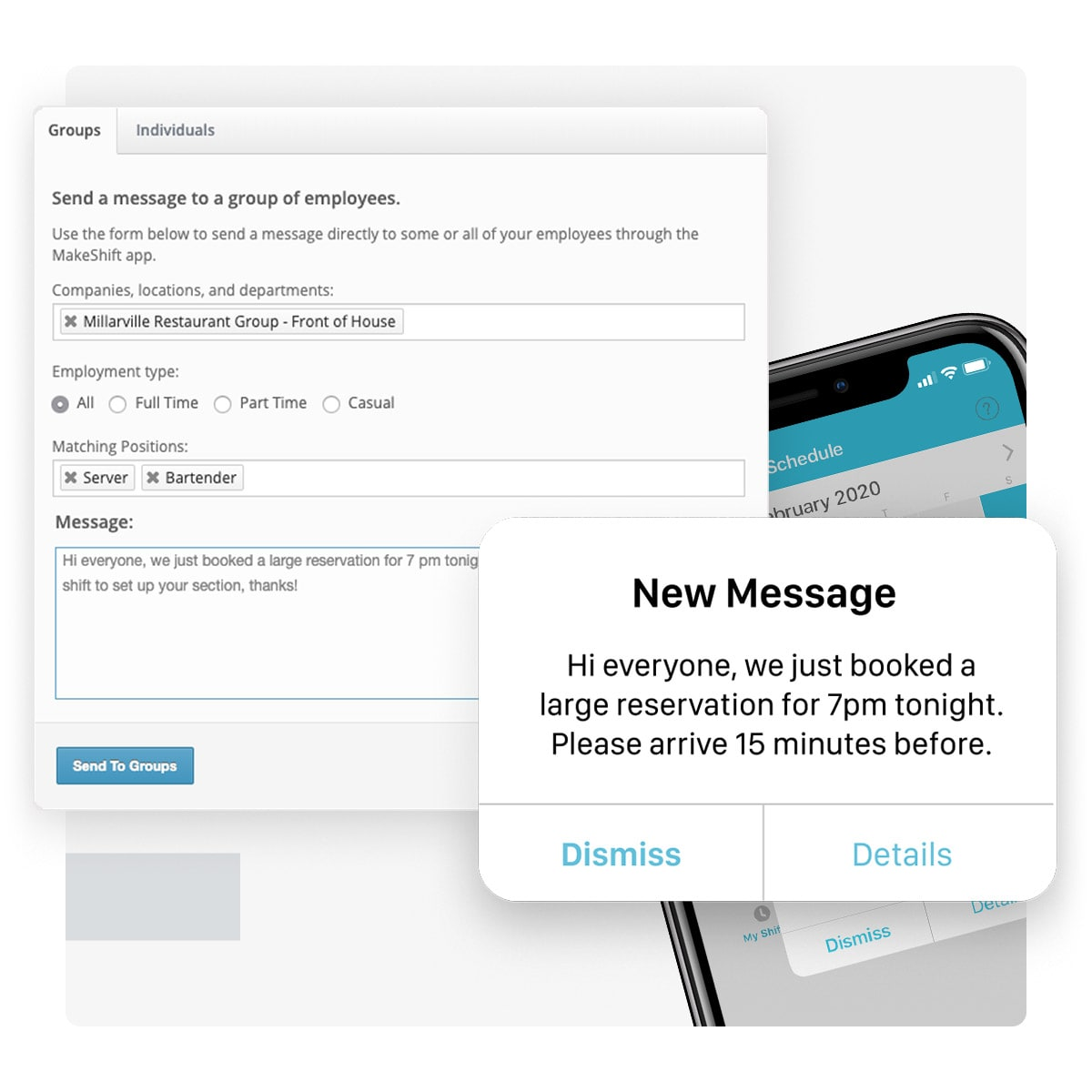
- Mobile accessibility — MakeShift can be accessed from any mobile device, allowing team members to view the schedule and communicate with each other on the go.
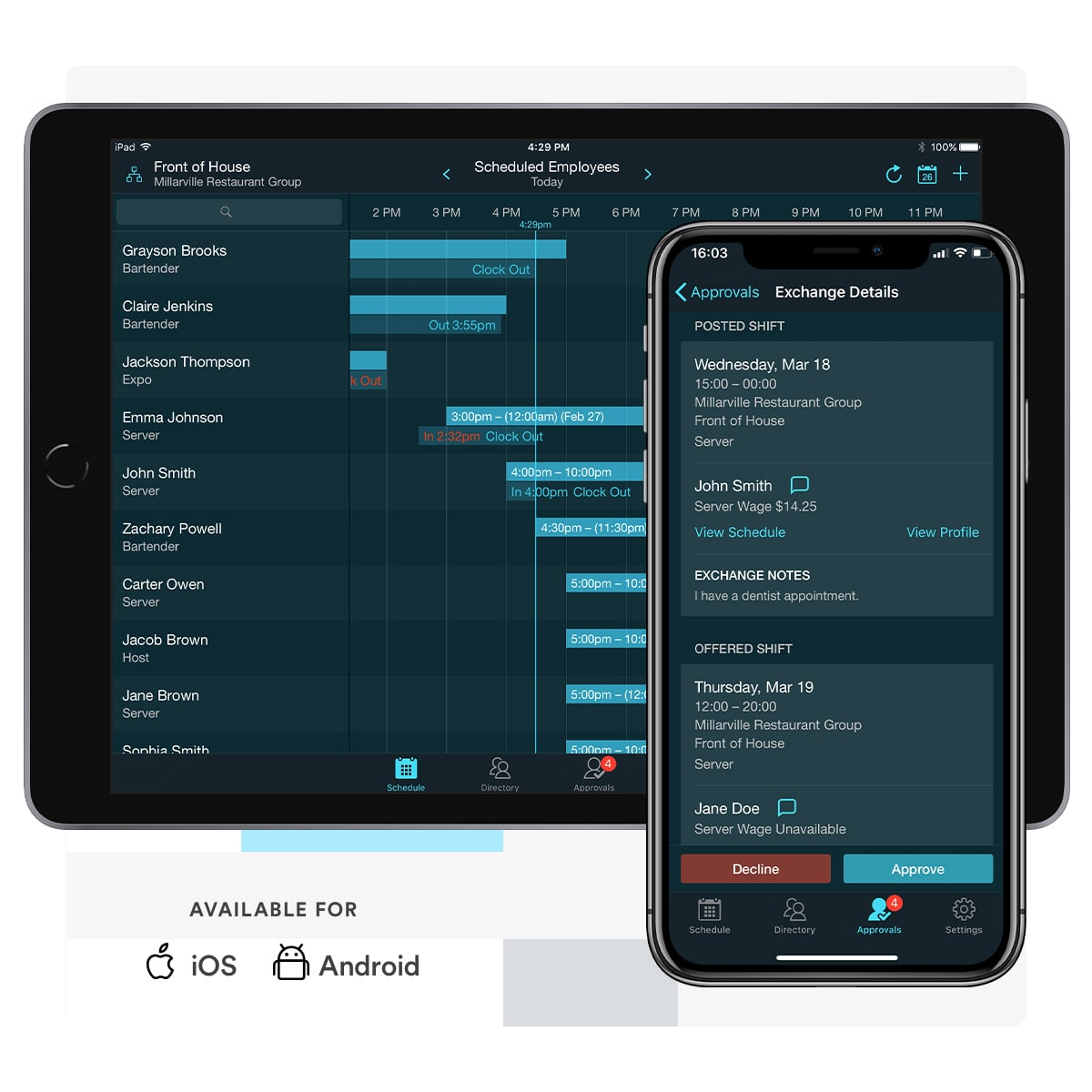
- Centralized data — MakeShift provides a centralized platform for scheduling and communication, making it easier to keep track of important information and ensuring that everyone is on the same page.
Home Health Care Scheduling Doesn’t Have To Be Chaotic
Home health care scheduling is certainly unique. It can be chaotic and frustrating.
But it doesn’t have to be.
You can provide great patient care, support your staff, and streamline your scheduling. MakeShift is here to help. Schedule your free demo today.




